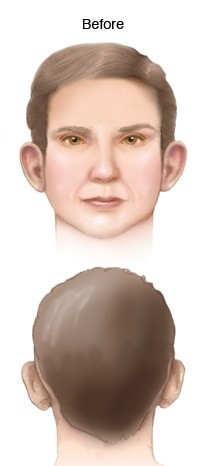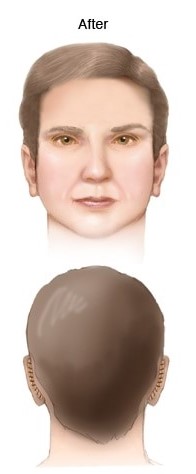Otoplasty
Otoplasty — also known as cosmetic ear surgery — is a procedure to change the shape, position or size of the ears.
You might choose to have otoplasty if you’re bothered by how far your ears stick out from your head. You might also consider otoplasty if your ear or ears are misshapen due to an injury or birth defect.
Otoplasty can be done at any age after the ears have reached their full size — usually after age 5 — through adulthood. In some cases, the surgery is done as early as age 3.
If a child is born with prominent ears and certain other ear-shape problems, splinting may successfully correct these issues if started immediately after birth.
Why it’s done
Otoplasty is typically done on both ears to optimize symmetry.
Otoplasty can be done at any age after the ears have reached their full size — usually after age 5.
Risks
Otoplasty poses various risks, including:
- Asymmetry in ear placement.
- Changes in skin sensation.
- Problems with stitches.
How you prepare
A consultation for otoplasty
Initially, you’ll talk to a plastic surgeon about otoplasty. During your first visit, your plastic surgeon will likely:
- Review your medical history
- Do a physical exam.
- Discuss your expectations.
Food and medications
You’ll likely need to avoid aspirin, anti-inflammatory drugs and herbal supplements, which can increase bleeding.
Other precautions
Smoking decreases blood flow in the skin and can slow the healing process. If you smoke, your doctor will recommend that you stop smoking before surgery and during recovery.
Also, be sure to make plans for someone to drive you home after surgery and stay with you for the first night of your recovery.
What you can expect
A few days after otoplasty, your doctor will remove your bandages. Your ears will likely be swollen and red. You’ll need to wear a loose headband that covers your ears at night for two to six weeks. This will help keep you from pulling your ears forward when rolling over in bed.
Talk to your doctor about when — or if — your stitches will be removed. Some stitches dissolve on their own. Others must be removed in the doctor’s office in the weeks after the procedure.


Results
After your bandages are removed, you’ll notice an immediate change in the appearance of your ears. These changes are permanent.
If you’re not satisfied with your results, check with your surgeon about the possibility of revision surgery.